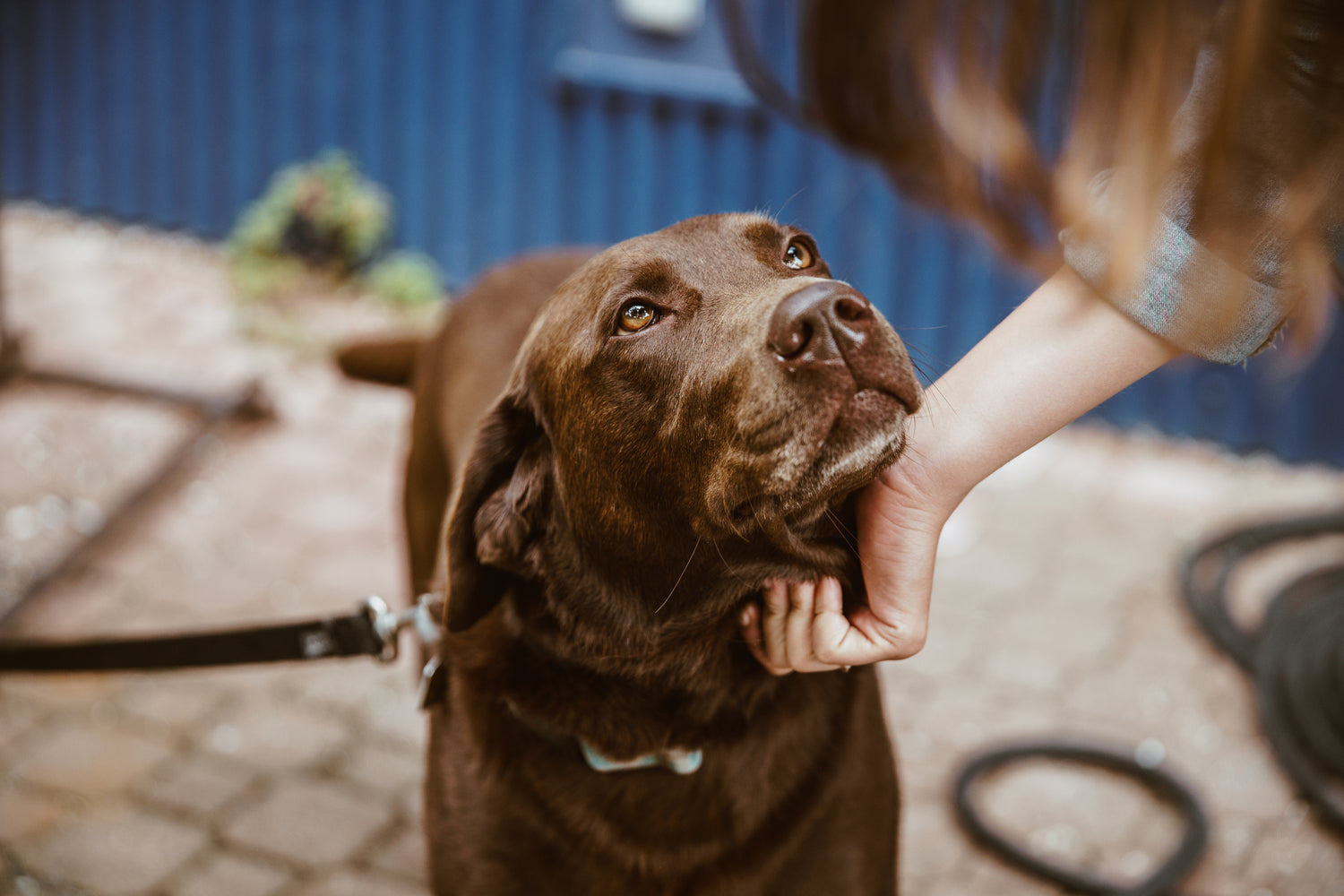Does My Dog Have Hip Dysplasia?
What Should I Do?

Many dogs will develop hip dysplasia in their lifetime. Dysplasia in dogs is one of the most prevalent canine orthopaedic conditions. As a progressive illness it can’t be cured, but early detection and the right treatment for hip dysplasia in dogs can help slow its progress.
Large breed dogs, such as German Shepherds, Golden Retrievers, and Labradors, can be especially vulnerable to developing it, but it can affect breeds of any size or age.

Hip dysplasia is when the ball of the femur (thigh bone) fits badly into the hip socket so that the bones don’t glide together smoothly as normal, but rub against each other, causing accelerated and excessive wear and tear. Inflammation, tears in the cartilage, fragments of bone chipping off, and osteoarthritis can all result from this, causing pain for the dog.
The bones don’t fit together well - either because the bones have poor conformation (e.g. the ball of the femur is flattened, or the hip socket is too shallow) or ligament laxity. A dog can be born with poor conformation, or the bones can develop badly because the hip ligaments are too lax, meaning they’re not held properly together. This causes the bones to meet at an odd angle, and they're unstable. As a result, they develop abnormally.
It’s worth noting that symptoms can present even in young puppies, as young as 4 months. It’s often diagnosed in puppies between 4 and 6 months old. In older dogs, it’s quite often diagnosed alongside osteoarthritis, only when the osteoarthritis symptoms become apparent. Osteoarthritis is an inevitable secondary condition resulting from hip dysplasia.
Symptoms can vary, depending on the level and severity of the hip dysplasia.

Any changes in gait that seem to be coming from the back legs could be a sign of hip dysplasia. ‘Bunny hopping’ in particular is a good indicator of hip dysplasia. If your dog’s bunny hopping, this means they’re using both legs at the same time, rather than each leg independently. Limping may be more pronounced after resting or after activity. You may also notice your dog favouring a particular leg when walking or running.
Noticing that your dog’s hind legs seem weaker, or that the muscles are less dense or wasted in any way, is a sign that they’re avoiding using those muscles because of pain and discomfort in their hips. Simultaneously, it becomes obvious that as their hindquarters become atrophied, their shoulders are bulking up. This is because a dog who has painful hip joints will shift their weight forward. This change in weight distribution towards the front legs, rather than the rear legs, consequently builds up the shoulder muscles.
Your previously very active dog may have become uncharacteristically reluctant to run, jump, or play - instead, preferring to rest or sleep - because it hurts them to do these activities.
Hip dysplasia can’t be cured but, if caught early enough, its progression can be significantly slowed down. Dogs with hip dysplasia will usually have a normal life expectancy, but you will be working to alleviate any pain your dog’s experiencing because of it, maintaining your dog’s mobility and quality of life, and impede the disease as much as possible.
Treatment for hip dysplasia in a dog follows one of two routes. Either a dog will need to have surgery, or follow a course of conservative management to deal with the symptoms of hip dysplasia in dogs.
Either way, the earlier hip dysplasia is identified, the better it will be for your dog. Learning the top 5 signs of hip dysplasia in dogs will help you keep an eye out for any symptoms that will alert you to this condition in your dog.
What Should I Do?
What Are The First Signs of Hip Dysplasia In Dogs?
What Are The Different Levels of Hip Dysplasia in My Dog?
What Should I Do?
What Should I Do?
For Hip Dysplasia For A Dog?
What Should I Do?
My Dog Has Very Bad Arthritis In His Hips. What Should I Do?
What Happens, Is It Successful, What I Should Know?
My Dog Is Too Old / Too Risky For Hip Dysplasia Surgery. What Are The Non-Surgical Options?
Can Physiotherapy and Hydrotherapy Help my Dog with Hip Dysplasia?
My Elderly Labrador has Hind Leg Hip Weakness. Does He Have Hip Dysplasia?
I Have a 13-year-old Border Collie with Hip Dysplasia in his Rear Right Hip. What Should I Do?
with Hip Dysplasia

We can help find the right solution for your dog
Feel free to give us a call on 01730 622544
or email us at woof@zoomadog.co.uk
Leave a comment